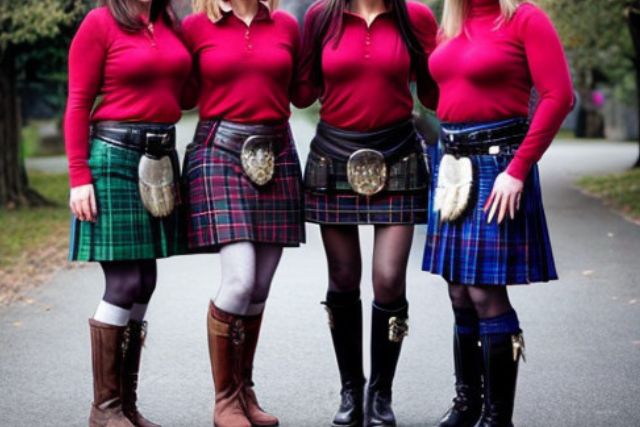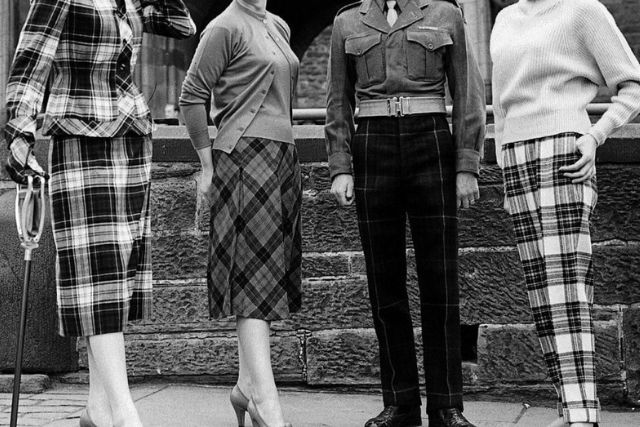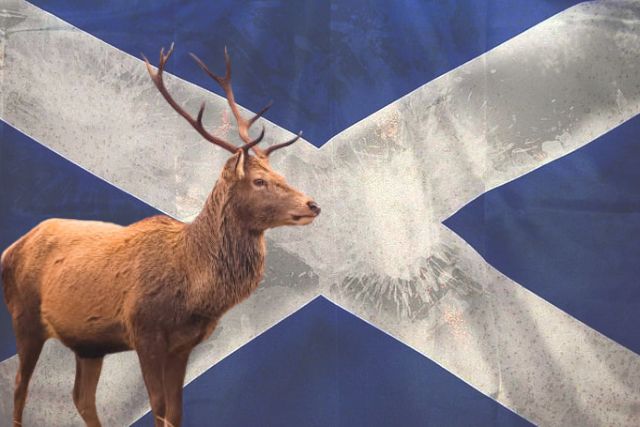When it comes to traditional Irish clothing, many might assume kilts are a staple item. However, the question remains – do Irish people actually wear kilts?. we will delve into the fascinating world of Irish fashion and explore the historical and cultural significance of kilts in Ireland. We will examine whether kilts are commonly worn by the Irish and shed light on the traditions surrounding Irish clothing.
So, do the Irish wear kilts? Let’s find out.
Before we dive into the specifics, it’s worth noting that kilts are more commonly associated with Scottish culture. However, there is still a connection between kilts and Ireland, and we will explore this further in the sections to come.
So, if you’re curious about whether Irish people wear kilts, keep reading to discover the truth behind this longstanding question.
The Origins of Kilts in Ireland
The Scottish kilt is a well-known symbol of Celtic culture, but what about the Irish kilt? Did it exist, and do Irish men wear them today?
The truth is, kilts were not traditionally worn by the Irish, but that doesn’t mean they didn’t have their own unique forms of dress. Ireland has a rich history of clothing, dating back to ancient times, and many of these garments are still celebrated today.
The Origins of Kilts
Kilts are commonly associated with Scotland, and for good reason – the modern-day Scottish kilt originated in the Scottish Highlands during the 16th century. However, the kilt as we know it today was not seen in Ireland until the 19th century when it was adopted by Irish regiments in the British Army.
Interestingly, the traditional Irish garment that closely resembles the Scottish kilt is the léine, a type of long linen shirt that was worn by both men and women.
Irish Men Playing Bagpipes
One common question is whether Irish men wear kilts while playing bagpipes, a common representation of Celtic culture. While Irish bagpipes (known as uilleann pipes) are distinct from Scottish bagpipes, there is no tradition of Irish men wearing kilts while playing them. Irish musicians instead have their own unique attire, including tweed jackets and trousers.
In conclusion, while the kilt is not a traditional form of Irish dress, Ireland has a rich history of clothing that is worth exploring.
Traditional Irish Clothing: Beyond Kilts
While kilts might be associated with Celtic culture, it is not common for the Irish to wear kilts in their daily lives. However, there are many other traditional garments that are prevalent in Irish clothing. These include:
- Aran sweaters: These woolen sweaters are hand-knitted and often feature intricate cable patterns. They originated from the Aran Islands off the west coast of Ireland and remain a popular item of clothing today.
- Tweed jackets: Tweed is a rough, woolen fabric that is commonly used to make jackets. It has a long history in Ireland and is often associated with country living and outdoor sports.
- Knee-length socks: These socks are often worn with shorts or kilts in Scottish clothing, but they are also a staple in traditional Irish attire.
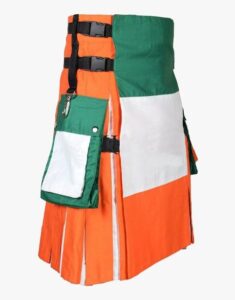
When it comes to special occasions such as weddings, it is not common for Irish people to wear kilts. However, some Irish couples may choose to incorporate kilts into their wedding attire as a nod to their Celtic heritage. If kilts are worn, they are often in the tartan of the groom’s family, rather than a specifically Irish pattern.
Contemporary Irish Attire
While kilts are not commonly worn by the Irish, there are certain occasions on which they might be seen sporting the traditional garment. One such occasion is St. Patrick’s Day parades, where Irish-Americans may wear kilts as a nod to their Celtic heritage.
However, it is important to note that the tartan kilts commonly associated with Scottish culture are not traditionally worn by the Irish. Instead, the Irish kilt, also known as the leine, is a knee-length garment made from solid-colored fabric such as wool or linen.
When it comes to contemporary Irish attire, plaid kilts are not commonly seen. Instead, Irish men tend to opt for modern suits and dress shirts for formal occasions such as weddings and other celebrations.
That being said, there is no hard and fast rule when it comes to Irish fashion. Some modern Irish men may choose to incorporate elements of traditional Irish clothing, including kilts, into their daily or formal attire as a way to honor their heritage.
Debunking the Myth: What’s Underneath the Kilt?
One of the most common questions when it comes to kilts is whether Irish men wear anything underneath them. The truth is that it varies depending on personal preference and the occasion.
While some may choose to go commando, it is not the norm for most Irish men to do so. In fact, many prefer to wear underwear for both comfort and practicality.
When it comes to formal events and occasions, such as weddings, it is generally expected for Irish men to wear underwear under their kilts. This is in line with traditional formalwear etiquette and standards of modesty.
However, in more casual settings such as Highland games or informal gatherings, some may choose to forego underwear for a more authentic or comfortable experience.
In summary, while there is no specific rule or tradition dictating what Irish men should wear underneath their kilts, the general consensus is to wear underwear. It ultimately comes down to personal preference and the occasion at hand.
Kilts in Ceremonies and Celebrations
The wearing of kilts is often associated with Irish and Scottish culture. And while kilts are more commonly associated with Scotland, they do have a significant presence in Irish culture, particularly in ceremonial events.
Kilts in Irish Ceremonies
One of the most significant events where kilts are worn in Irish culture is at weddings. While kilts are not often worn by Irish grooms, they are a common attire for Scottish grooms, particularly those of Scottish-Irish descent. Additionally, bagpipers at Irish weddings often wear kilts as part of their performance attire.
Irish military bands also wear kilts as part of their ceremonial dress. The Royal Irish Regiment, for example, is known for wearing a traditional kilt featuring the regimental tartan.
Kilts in English Ceremonies
In English culture, kilts are often seen at certain ceremonies, particularly those with Scottish or Irish connections. For example, the Royal Regiment of Scotland wears kilts as part of their formal dress, and some Scottish regiments in the British Army also wear kilts for ceremonial events.
Kilts are also a common sight at events such as Highland Games, which feature traditional Scottish competitions such as caber tossing and hammer throwing.
Overall, while kilts may not be as prevalent in Irish culture as they are in Scottish culture, they do hold a significant place in ceremonial events, particularly those with Irish or Scottish connections.
Kilts and Irish Dance
When it comes to Irish dance, kilts are often associated with the male performers. But do Irish dancers wear kilts?
While kilts are not a traditional garment for Irish dancers, they are sometimes seen in modern performances. These kilts are typically made from lightweight and flexible materials to allow for the intricate footwork of Irish dance. They often feature Celtic designs and colors reflective of Irish culture.
It’s important to note that not all Irish dance performances include kilts. Many male dancers opt for traditional trousers or shorts instead. However, for those who do choose to wear kilts, it can add a unique and visually striking element to their performance.
Overall, while kilts are not an essential part of Irish dance attire, they can be a stylish and culturally significant addition for those who choose to incorporate them into their performances.
The Distinction: Irish Kilts vs Scottish Kilts
While kilts are often associated with Scotland, they also have significant cultural and historical ties to Ireland. However, there are distinct differences between Irish kilts and Scottish kilts.
Irish Kilts
Irish kilts, also known as “féileadh mòr” or “great kilt,” are typically made of solid-colored wool and are pleated in the back. They are also longer than Scottish kilts, often reaching the ground. Irish kilts were traditionally worn by men during the 16th and 17th centuries but have since fallen out of common use.
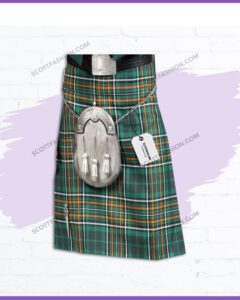
Today, Irish kilts are primarily worn by pipe bands and in historical reenactments. They are less commonly seen in everyday Irish fashion and are not typically worn at weddings or other special occasions.
Scottish Kilts
Scottish kilts, on the other hand, are often made of plaid or tartan wool and are pleated all the way around. They are shorter than Irish kilts, typically reaching to the knee or mid-calf. Scottish kilts are still worn regularly in Scottish culture, especially at weddings, funerals, and other formal occasions.
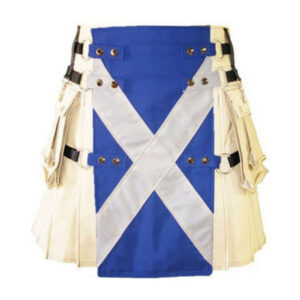
While both Irish and Scottish kilts share some similarities, such as their use of wool and pleats, the cultural significance and traditional uses of each are distinct. Understanding these differences is important in order to appreciate the unique traditions and customs of both Ireland and Scotland.
Conclusion
After exploring the fascinating topic of Irish clothing traditions, we can confidently answer the question on everyone’s mind: Do Irish people wear kilts?
While kilts are not commonly worn by the Irish, they do have a rich history and cultural significance in Ireland. The origins of kilts in Ireland are closely tied to Scottish kilts, and while Irish men do not traditionally wear kilts while playing bagpipes, they do have other traditional garments.
When it comes to modern-day Irish fashion, kilts are not commonly seen, but they may be worn on special occasions such as weddings. And, of course, we cannot forget the age-old question of what’s underneath the kilt – Irish men may or may not choose to wear undergarments.
Kilts also have ceremonial significance in both Irish and English traditions, and they are commonly worn by traditional Irish dancers. However, it is important to note the distinction between Irish kilts and Scottish kilts, each with their unique characteristics and cultural significance.
Overall, while Irish people may not commonly wear kilts, the topic is a fascinating exploration of Irish clothing traditions and their connection to broader Celtic culture.
FAQ’s
Do Irish people wear kilts?
No, kilts are not traditionally worn by Irish people. Kilts are more commonly associated with Scottish culture.
What is the origin of kilts in Ireland?
Kilts originated in Scotland and are not native to Ireland. However, there may be some historical connections between Irish and Scottish kilts.
What traditional Irish clothing is commonly worn?
Traditional Irish clothing includes items such as the Aran sweater, the caubeen hat, and the brat shawl. Kilts are not typically part of traditional Irish attire.
Do Irish men ever wear kilts?
While kilts are not commonly worn by Irish men, there may be specific occasions or events where kilts are worn as a fashion choice.
What do Irish men wear underneath kilts?
The choice to wear anything underneath a kilt is a personal preference. There are no strict cultural norms regarding underwear or lack thereof.
Are kilts worn during Irish and English ceremonies?
Kilts are not typically worn by Irish participants in ceremonies, but they may be worn by English participants in certain events or organizations.
Do Irish dancers wear kilts?
Traditional Irish dancers do not wear kilts as part of their performance attire. Irish dance costumes have their own specific styles and designs.
What is the difference between Irish kilts and Scottish kilts?
Irish kilts and Scottish kilts have distinct differences in design, tartan patterns, and cultural significance. They represent separate traditions within their respective cultures.

